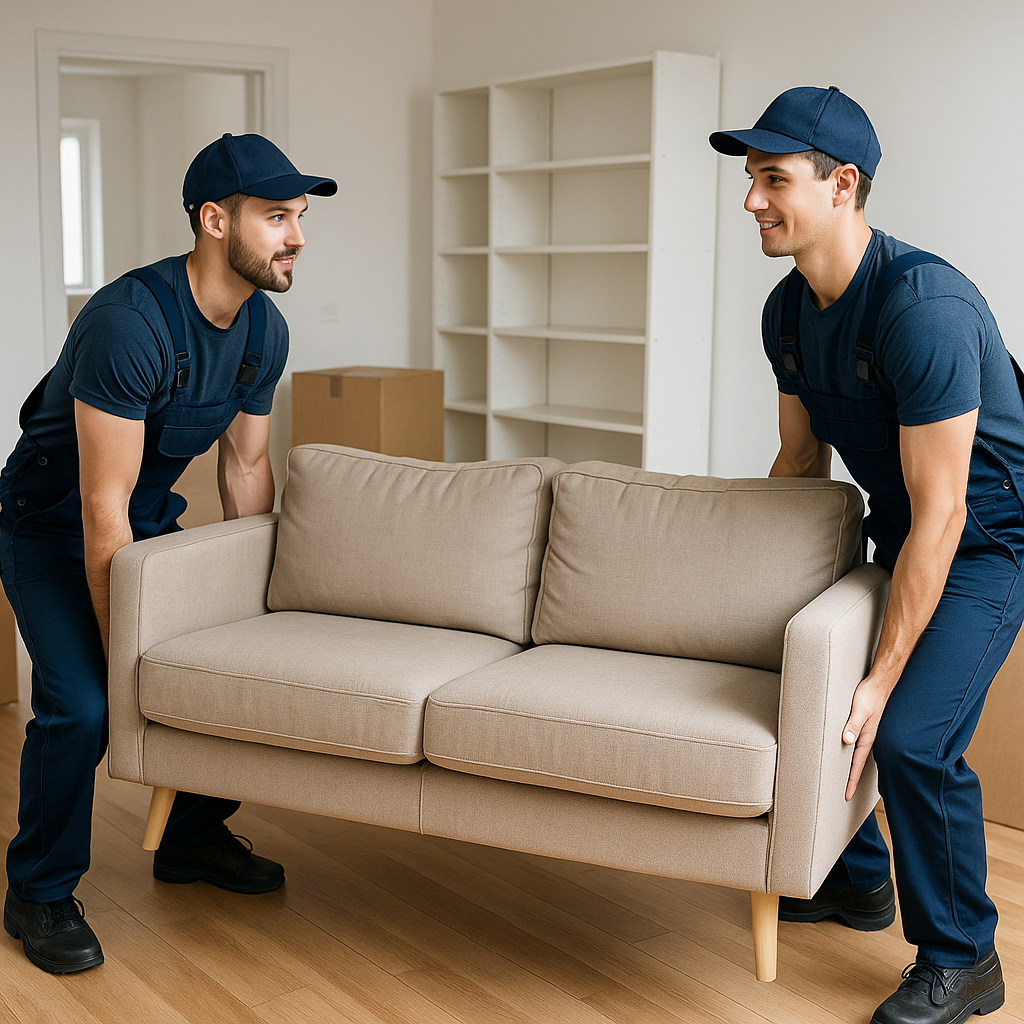
Moving day brings a unique blend of anticipation and anxiety. When large items like upright pianos or sectional sofas come into play, the tension gets dialed up. These aren’t just heavy—they’re often awkwardly shaped and emotionally significant. So how do professionals manage to get these monsters out the door, down tight staircases, and into a moving truck without damage? There’s no magic wand involved—just a calculated mix of planning, physics, and finesse. For families and businesses alike, understanding how professionals get this job done gives a new level of appreciation for what it takes to move more than just boxes.
Pre-Move Strategy: Measuring, Mapping, and More
Before a single piece is lifted, professional movers spend a lot of time just thinking. Sounds strange, right? But planning is everything. Measurements of the furniture and all potential obstacles—door frames, staircases, tight corners—are taken seriously. It’s like choreographing a dance, but with significantly heavier partners. You’ll see teams drawing rough floor plans, assessing entry points, and even removing doors or railings ahead of time. These steps prevent real-time disasters, like getting halfway through a staircase turn only to realize the couch won’t fit. Furniture movers in NJ who take this kind of initiative set the tone for a smooth and damage-free move.
Using Tools That Do the Heavy Lifting
Relying on brute strength alone is a rookie mistake. Real pros come equipped with tools designed to make heavy lifting look almost easy. Dollies, sliders, lifting straps, and stair-rolling equipment are part of the standard toolkit. Piano boards, in particular, are engineered specifically for transporting these massive musical instruments while protecting their structure and polish. So when you see a team of movers glide a 500-pound upright piano down a narrow hallway without nicking a single wall, you’re not witnessing luck—you’re seeing the right tools in the right hands.
Disassembly: The Not-So-Secret Weapon
Sometimes the only way through is to take it apart. Sofas with removable legs, beds that can be broken down, and even modular pianos designed for easier transport—these details matter. Disassembling doesn’t just make pieces easier to handle; it also reduces the chances of scraping paint or bumping into walls. Furniture movers in NJ often arrive with a toolkit ready to tackle these deconstruction tasks on-site. That sectional sofa with the stubborn corner? Breaking it down into smaller, manageable sections saves time and keeps your home intact.
Navigating Stairs Without Breaking a Sweat—or the Furniture
Stairs are notorious troublemakers. The incline adds an extra layer of difficulty, especially with top-heavy pieces like armoires or grand pianos. This is where communication within the moving crew becomes critical. Calls like “tilt,” “slow,” and “watch your right” echo down the staircase like a well-rehearsed theater production. It’s coordinated, careful, and calm—even when things get tricky. Piano movers in New Jersey rely on this kind of clear talk and practiced technique to make stair navigation look easier than it is.
Weather and Timing: Two Sneaky Influencers
Ever try moving a couch down a slick, icy front porch? Not ideal. Timing matters—most seasoned movers keep an eye on the forecast and plan accordingly. Rain can affect grip, snow can complicate stair descents, and blazing summer heat can wear a team down fast. Planning a move in milder conditions or during daylight hours helps maintain both safety and efficiency. If moving during the colder months, you’ll often see tarps laid down and salt sprinkled liberally to keep both feet and furniture secure.
Protective Wrapping and Padding: Because Walls Have Feelings Too
This one’s easy to underestimate. Padding, blankets, corner protectors—these are the unsung heroes of a clean move. They prevent damage to furniture, yes, but also to your door frames, banisters, and freshly painted walls. Furniture movers in NJ take this seriously, often wrapping delicate or high-value pieces like dining hutches or antique chairs before a single lift begins. This extra layer of protection means that even if a stair bump or hallway scrape happens, nothing gets bruised—furniture or ego.
When Local Know-How Makes All the Difference
Every region has its quirks. New Jersey homes can vary dramatically, from narrow brownstones to sprawling suburban layouts. Local crews who’ve worked in everything from historic homes with tight staircases to high-rise apartments with elevator policies know what to expect. They’re familiar with which neighborhoods have problematic door frames or unusually steep basements. That local experience helps piano movers in New Jersey approach each job with a game plan tailored to your unique property quirks.
Communication: The Final Piece of the Puzzle
It might sound overly simple, but good communication between movers and clients is what ties everything together. Being clear about which pieces are fragile, which entryways are off-limits, and what matters most ensures a smoother process. The most reliable teams won’t just show up and start lifting—they’ll walk through the property with you, talk over concerns, and explain how they plan to get your prized possessions from point A to B without hiccups. You’re not just handing over your stuff—you’re trusting someone with your personal history.
Conclusion:
Successfully moving large items through tight spaces is never a happy accident. It’s a result of careful preparation, real-world experience, and physical coordination. Whether you're dealing with bulky recliners, grand pianos, or both, hiring seasoned professionals makes a measurable difference. They know how to disassemble, wrap, carry, and communicate, minimizing risk and maximizing efficiency.
Princeton Moving stands out not just because of the services provided, but because of the human touch behind every relocation. As a family-owned operation, the team understands that moving isn’t just about logistics—it’s about making transitions feel safe, smooth, and even a little less stressful.
Ready to relocate without worrying about cracked banisters, scratched walls, or strained friendships from “helping” hands? Leave it to the folks who’ve seen every doorway twist and staircase turn, and still managed to smile at the end of it.
NJ LIC# 39PC000712